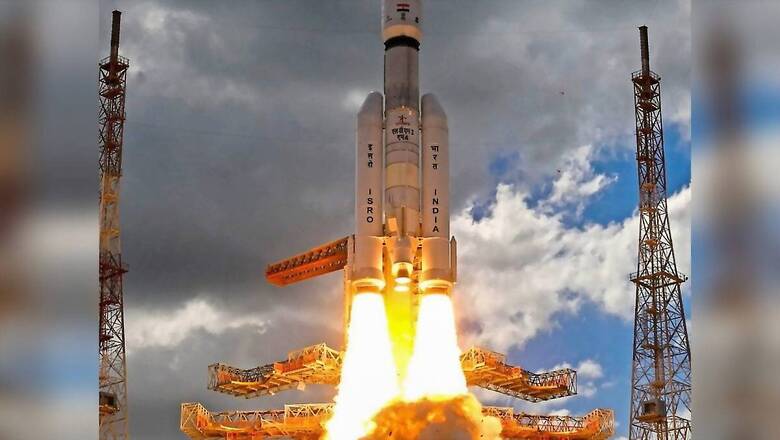
views
Chandrayaan-3 steadily continues its journey to the moon, even as Luna-25 — which was expected to outpace it —crashed on the lunar surface on Saturday. Russia, formerly the Soviet Union, had demonstrated the first-ever soft landing on the moon in 1966, but fell short of repeating the historic feat 57 years later with its comeback mission.
While this has come as a jolt to the premier space agency, it has catapulted Chandrayaan-3 to the centre-stage ahead of its planned touchdown on Wednesday. Indian Space Research Organisation (ISRO) now has the opportunity to make the landmark achievement and become the first to land on the relatively unexplored South Pole of the moon. India’s Lander is now circling the moon in an elliptical orbit of 25 x 134 km and set to attempt its soft landing starting 5.45pm on August 23.
RACE FOR MOON’S SOUTH POLE
Russia, with its powerful Soyuz rocket, was touted to surpass India to become the first nation to land on the lunar South Pole on August 21. However, its plan went awry on Saturday when communication with the automated spacecraft got snapped just before it was expected to switch to a pre-landing elliptical orbit. The signal lag forced the spacecraft into a free fall on the lunar surface. All efforts to locate the craft and restore contact remained unsuccessful, the agency said.
“Russia has far more powerful rockets and they have already landed on the moon several times before. It is unfair to make comparisons. Both agencies were aware of each other’s plans and the landing areas were different. It is no longer a space race like the 1960s. What matters now is what you do once you land there,” said space expert Group Captain Ajey Lele (retd), consultant with the Manohar Parrikar Institute for Defence Studies and Analyses (IDSA).
According to experts, the Luna-25 crash is in fact a major loss to the science of lunar exploration. “The Russian lander was designed to operate for a year far closer to the South Pole and would have collected crucial data helpful for all scientists. It was also expected to extract rock samples and bring them to Earth,” he added.
Space exploration has evolved and space agencies have realised that it can only happen through international cooperation, experts say. Russia was initially expected to collaborate with ISRO for Chandrayaan-2. But when it did not materialise, ISRO took the challenge head-on to launch indigenously built Chandrayaan-2 in 2019.
Four years later, when India returned to the moon, Russia joined the journey and launched its much-delayed lunar mission — first in 47 years. Despite a month’s delay, the two spacecraft found themselves circling the moon at the same time, eyeing a lunar landing on the South Pole. While Chandrayaan-3 locked in August 23 to land, Luna-25 targeted a landing two days before on August 21.
CHANDRAYAAN-3’S BID TO CREATE HISTORY
With almost half the resources and funds as that of major spacefaring nations, experts believe ISRO has a unique opportunity to make this landmark achievement. Several countries have failed in a lunar touchdown in recent years, including Israel and Japan. However, ISRO has learnt its lessons from 2019 and showed the capability to succeed.
“ISRO’s confidence stems from the multiple ground tests and sensor checks conducted over the last few years. But, landing in space is always going to be challenging and nothing is certain till the last moment. Even a small deviation or error can jeopardise the mission. But if the tests are done reliably, and performance is optimum, then that brings confidence. ISRO has tested very well. Chandrayaan-3 has the necessary backups. It has been given more fuel and flexibility as it can hover over the location before touchdown,” said Dr P Sreekumar, former director, ISRO’s Space Science Program Office.
While there are still many unknowns in space, ISRO has done adequate testing to be optimistic this time. A successful touchdown could open new opportunities for India as it becomes a go-to destination for launching cost-effective space missions in the near-future.
“Moon is the nearest celestial body. It is crucial to land there successfully, so we can look beyond it. If the automated spacecraft cannot survive the landing, how will humans? We are not collecting lunar samples now, but we hope to do that in the near-future,” he remarked.


















Comments
0 comment